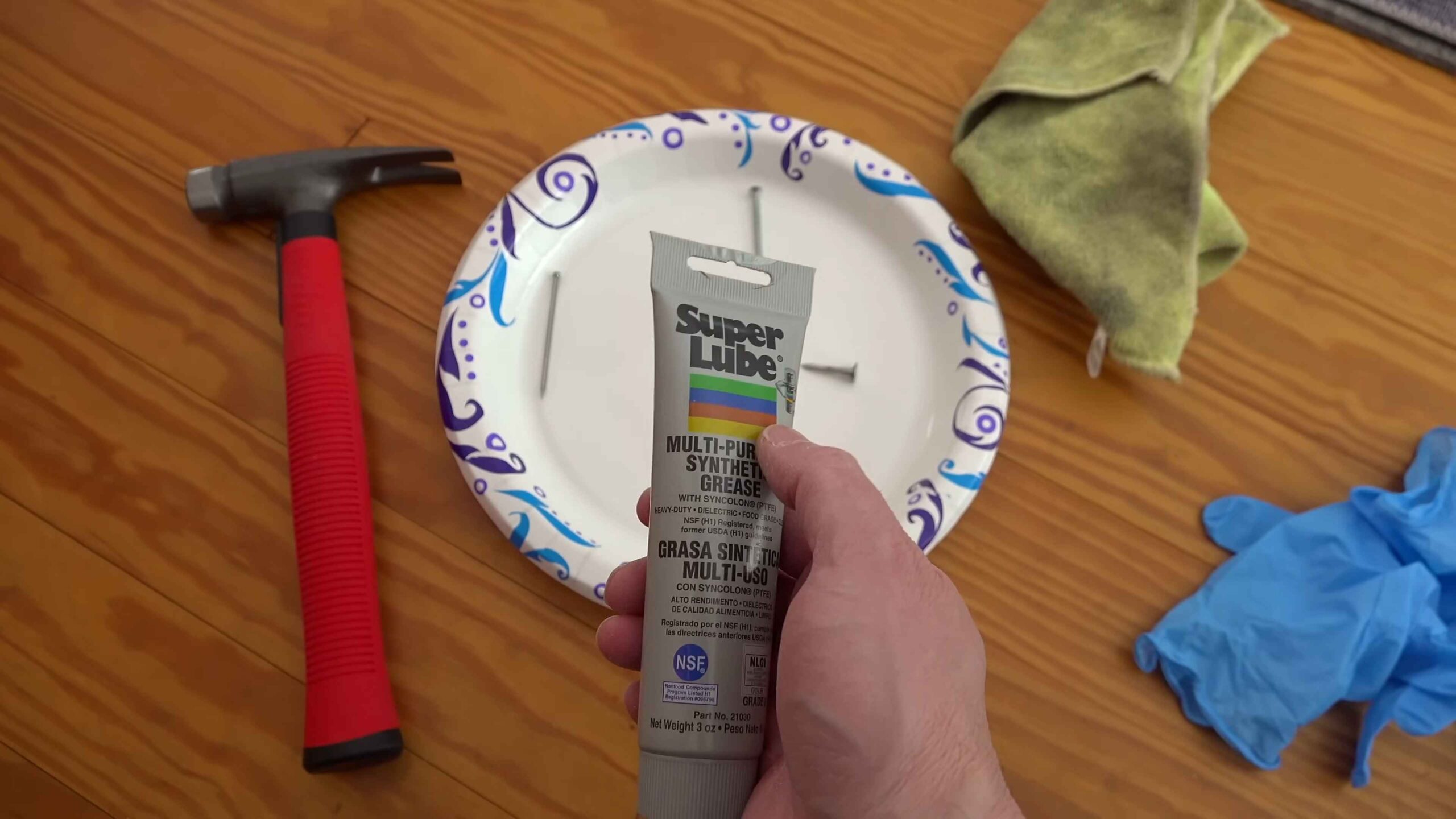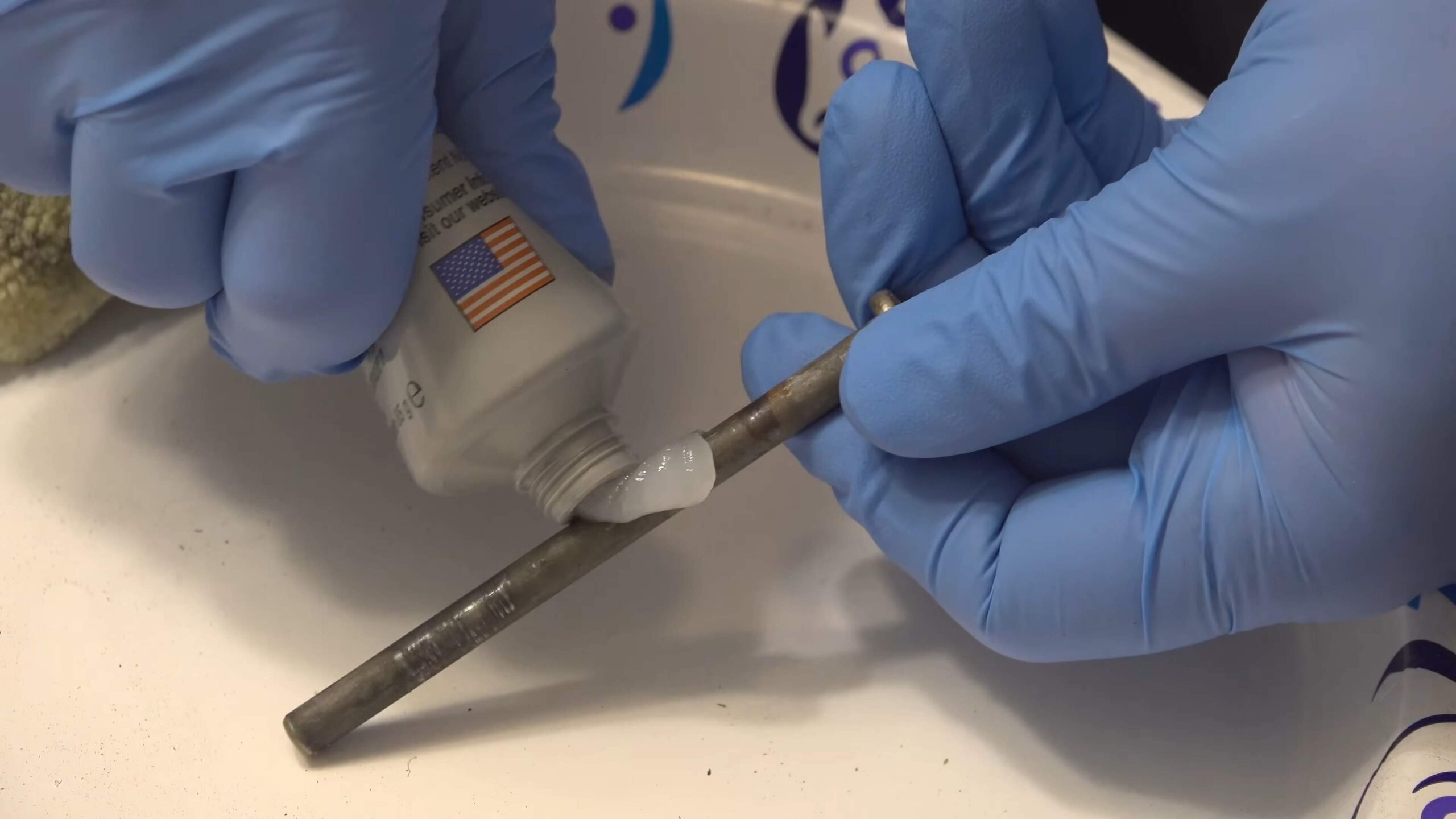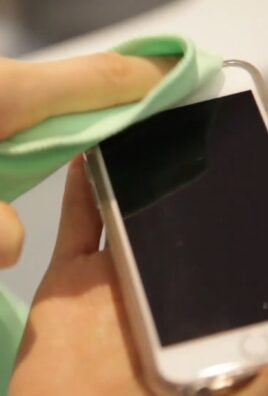Door squeak fix: Is that incessant squeaking driving you absolutely bonkers? I know the feeling! That high-pitched whine every time you open or close a door can be more than just annoying; it can feel like a tiny gremlin is taunting you from within the hinges. But fear not, fellow homeowner, because banishing that bothersome noise is easier than you think! This isn’t some ancient art passed down through generations, but the need to silence squeaky doors has probably been around since doors were invented! Think about it – creaky doors in castles, groaning gates in old Westerns… the struggle is real, and it’s timeless.
Why is this door squeak fix so crucial? Well, beyond the obvious irritation, a squeaky door can actually be a sign of a bigger problem. It could indicate dry hinges, misaligned hardware, or even warping wood. Addressing the squeak now can prevent more serious (and costly!) repairs down the line. Plus, let’s be honest, a silent door is just more peaceful and welcoming. Imagine sneaking in late without announcing your arrival to the entire household! Or enjoying a quiet morning without the soundtrack of squeaky hinges. In this article, I’m going to share some simple, DIY tricks and hacks that will have your doors swinging silently in no time. Get ready to say goodbye to that annoying squeak and hello to a more peaceful home!

Silence That Squeaky Door: A DIY Guide to a Peaceful Home
Okay, let’s face it, that squeaky door is driving you nuts, right? Every time someone opens or closes it, it’s like nails on a chalkboard. Well, fear not! I’m here to guide you through a few simple DIY fixes that will have your door swinging silently in no time. We’ll cover everything from identifying the source of the squeak to applying the right lubricant. Let’s get started!
Identifying the Culprit: Where’s That Squeak Coming From?
Before we start slathering lubricant everywhere, we need to pinpoint exactly where the squeak is originating. This will save you time and ensure you’re addressing the actual problem.
* Open and close the door slowly: Pay close attention to the sound. Is it coming from the hinges, the latch, or somewhere else entirely?
* Isolate the hinges: Focus on each hinge individually. Try wiggling the door slightly while listening closely. You might even have a helper open and close the door while you get up close and personal with each hinge.
* Check the latch and strike plate: Sometimes, the squeak isn’t from the hinges at all. It could be the latch rubbing against the strike plate (the metal plate on the door frame where the latch goes in).
* Look for signs of wear and tear: Are the hinges rusty? Is the strike plate misaligned? Are there any visible signs of friction? These clues can help you narrow down the source of the squeak.
* Consider the weather: Sometimes, changes in humidity can cause wood to expand or contract, leading to squeaks. If the squeak only appears during certain times of the year, this could be the reason.
The Lubrication Solution: Silencing the Squeak
Once you’ve identified the source of the squeak, it’s time to lubricate! There are several options you can use, each with its own pros and cons.
* WD-40: A classic choice, but it’s more of a solvent than a lubricant. It’s great for cleaning and loosening things up, but it doesn’t last very long. It can also attract dust and grime over time.
* Silicone spray: A good all-around lubricant that’s safe for most surfaces. It’s water-resistant and doesn’t attract dust as much as WD-40.
* Graphite powder: An excellent dry lubricant that’s ideal for hinges and locks. It’s clean, long-lasting, and won’t attract dirt.
* Petroleum jelly (Vaseline): A surprisingly effective lubricant for hinges. It’s thick and long-lasting, but it can be a bit messy to apply.
* White lithium grease: A heavy-duty lubricant that’s ideal for high-friction areas. It’s long-lasting and water-resistant, but it can be a bit overkill for a simple door squeak.
My personal recommendation? I usually start with silicone spray. It’s easy to apply, effective, and doesn’t make a huge mess. If that doesn’t work, I move on to graphite powder or petroleum jelly.
Step-by-Step Lubrication Guide
Alright, let’s get those hinges squeak-free! Here’s how to do it:
1. Gather your supplies: You’ll need your chosen lubricant, a clean rag, and possibly a small brush or applicator (depending on the lubricant). For graphite powder, a small squeeze bottle with a nozzle works wonders.
2. Protect the surrounding area: Place a rag or paper towel under the hinge to catch any drips. You don’t want to stain your floor or door frame!
3. Apply the lubricant:
* For spray lubricants (WD-40, silicone spray): Aim the nozzle at the hinge pin and spray a short burst of lubricant. Don’t overdo it!
* For graphite powder: Squeeze a small amount of powder into the hinge joint. You can use a small brush to work it in.
* For petroleum jelly: Apply a small amount of petroleum jelly to the hinge pin using your finger or a small brush.
4. Work the lubricant in: Open and close the door several times to distribute the lubricant throughout the hinge.
5. Wipe away excess lubricant: Use a clean rag to wipe away any excess lubricant that drips out of the hinge. This will prevent it from attracting dust and grime.
6. Repeat if necessary: If the squeak persists, repeat the lubrication process. You may need to apply a second or even a third coat of lubricant.
7. Address the other hinges: Even if only one hinge is squeaking, it’s a good idea to lubricate all the hinges on the door. This will help prevent future squeaks and ensure smooth operation.
Dealing with a Squeaky Latch
If the squeak is coming from the latch rubbing against the strike plate, here’s what you can do:
1. Identify the point of contact: Look closely at the strike plate to see where the latch is rubbing. You may see a shiny spot or some wear marks.
2. Apply lubricant: Apply a small amount of lubricant (silicone spray, graphite powder, or petroleum jelly) to the strike plate where the latch makes contact.
3. Test the door: Open and close the door several times to distribute the lubricant.
4. Adjust the strike plate (if necessary): If the latch is rubbing excessively, you may need to adjust the strike plate. Loosen the screws holding the strike plate in place and move it slightly up, down, left, or right until the latch operates smoothly. Tighten the screws back down.
5. Consider filing: If the strike plate is severely misaligned, you may need to file it down slightly to create more clearance for the latch. Use a metal file to carefully remove small amounts of material from the strike plate. Be careful not to remove too much!
When Lubrication Isn’t Enough: More Advanced Solutions
Sometimes, lubrication just isn’t enough to silence a stubborn squeak. In these cases, you may need to try some more advanced solutions.
* Tighten loose hinge screws: Loose hinge screws can cause the door to sag and rub against the frame. Use a screwdriver to tighten any loose screws. If the screws are stripped, you may need to replace them with longer screws or use wood glue to fill the screw holes before re-inserting the screws.
* Replace worn hinge pins: Worn hinge pins can also cause squeaks. You can replace the hinge pins by tapping them out with a hammer and punch. Be sure to purchase replacement pins that are the same size and type as the originals.
* Shim the hinges: If the door is sagging, you can shim the hinges to realign it. Cut small pieces of cardboard or wood veneer and place them behind the hinge plates to raise or lower the door.
* Sand down the door edge: If the door is rubbing against the frame, you may need to sand down the edge of the door. Use sandpaper to carefully remove small amounts of material from the door edge until it no longer rubs.
* Replace the hinges: If all else fails, you may need to replace the hinges entirely. This is a more involved process, but it can be necessary if the hinges are severely damaged or worn.
Replacing a Hinge: A Detailed Guide
Okay, so you’ve decided to replace a hinge. Don’t worry, it’s not as daunting as it sounds! Here’s a step-by-step guide:
1. Gather your supplies: You’ll need a new hinge (make sure it’s the same size and type as the old one), a screwdriver, a hammer, a chisel (optional), and a utility knife.
2. Prepare the door and frame: Place shims under the door to support it and prevent it from sagging. This will make it easier to remove and replace the hinge.
3. Remove the old hinge: Use a screwdriver to remove the screws holding the old hinge in place. If the screws are stripped, you may need to use a screw extractor.
4. Clean the mortise: The mortise is the recessed area in the door and frame where the hinge sits. Use a chisel or utility knife to clean out any old paint, debris, or wood fragments from the mortise.
5. Install the new hinge: Place the new hinge in the mortise and align it with the screw holes. Use a screwdriver to install the screws. Be careful not to overtighten the screws, as this can strip the screw holes.
6. Repeat for the other hinge leaf: Repeat the process for the other hinge leaf on the door frame.
7. Test the door: Open and close the door several times to make sure it swings smoothly and doesn’t rub against the frame.
8. Adjust if

Conclusion
So, there you have it! No more cringing every time someone opens or closes a door. This simple, effective, and inexpensive DIY door squeak fix is a game-changer for any homeowner tired of that irritating noise. We’ve walked you through the steps, highlighting how easy it is to silence those squeaky hinges with readily available household items. Forget expensive lubricants or calling a handyman; you can tackle this problem yourself in just a few minutes.
Why is this DIY trick a must-try? Because it’s practical, cost-effective, and delivers immediate results. Imagine the peace and quiet restored to your home, the end of startled pets, and the relief of not waking up the baby every time you need to grab a midnight snack. This isn’t just about fixing a squeak; it’s about enhancing your quality of life.
But the best part? This fix is incredibly versatile. While we focused on using common household oil, you can experiment with other options. For instance, if you have a can of silicone spray lubricant on hand, that works wonders too, especially for doors exposed to moisture. Graphite powder is another excellent choice, offering a dry lubricant that won’t attract dust and grime. Just be careful when applying it, as it can be messy!
For stubborn squeaks, try removing the hinge pin entirely, cleaning it thoroughly with a wire brush or steel wool, and then lubricating it before reinserting it. You can even try bending the hinge pin slightly to create a tighter fit. Remember to work slowly and methodically, and don’t be afraid to repeat the process if necessary.
We’re confident that this DIY door squeak fix will become your go-to solution for silencing those noisy doors. It’s a simple yet powerful way to maintain your home and enjoy a more peaceful living environment.
Now, it’s your turn! We encourage you to try this DIY door squeak fix and experience the difference for yourself. Don’t let those squeaky doors drive you crazy any longer. Grab your preferred lubricant, follow our easy steps, and enjoy the sweet sound of silence.
And most importantly, we want to hear about your experience! Share your results, any variations you tried, and any tips you discovered in the comments below. Let’s create a community of squeak-free homes! Your feedback will help others find the perfect solution for their squeaky doors. Let us know if this DIY door squeak fix worked for you!
Frequently Asked Questions (FAQ)
Q: Why is my door squeaking in the first place?
A: Door squeaks are typically caused by friction between the hinge pin and the hinge leaves. Over time, the lubricant in the hinges dries out, leading to metal-on-metal contact and that annoying squeaking sound. Rust, dirt, and grime can also contribute to the problem. Sometimes, loose screws in the hinges can also cause movement and squeaking.
Q: What kind of lubricant should I use for this DIY door squeak fix?
A: The best lubricant depends on what you have available and the severity of the squeak. Common household oil, like olive oil or vegetable oil, can work in a pinch for a quick fix. However, for a more long-lasting solution, consider using a dedicated lubricant like WD-40 (though it’s more of a cleaner than a lubricant, so follow up with a lubricant), silicone spray, lithium grease, or graphite powder. Silicone spray is excellent for doors exposed to moisture, while graphite powder is a dry lubricant that won’t attract dust.
Q: How often should I lubricate my door hinges?
A: The frequency of lubrication depends on how often the door is used and the environment it’s in. Doors that are used frequently or exposed to moisture may need to be lubricated more often. As a general rule, check your door hinges every six months and lubricate them if they start to squeak or become stiff. Regular maintenance will prevent squeaks and extend the life of your hinges.
Q: What if the squeak persists after applying lubricant?
A: If the squeak persists after applying lubricant, there are a few things you can try. First, make sure you’ve applied the lubricant thoroughly to all parts of the hinge, including the hinge pin and the hinge leaves. You can also try removing the hinge pin, cleaning it with a wire brush or steel wool, and then lubricating it before reinserting it. If the hinge pin is bent or damaged, you may need to replace it. In some cases, the squeak may be caused by loose screws in the hinges. Tighten the screws to see if that resolves the issue. If the screws are stripped, you may need to replace them with longer screws or use wood glue to secure them.
Q: Can I use WD-40 as a lubricant for my door hinges?
A: While WD-40 is often used to loosen rusted parts and displace moisture, it’s not technically a lubricant. It can provide temporary relief from squeaks, but it tends to evaporate quickly, leaving the hinges dry again. If you use WD-40, it’s best to follow it up with a proper lubricant like silicone spray or lithium grease for a more long-lasting solution.
Q: Is it possible to over-lubricate door hinges?
A: Yes, it is possible to over-lubricate door hinges. Applying too much lubricant can attract dust and grime, which can actually worsen the problem over time. It can also create a mess, dripping onto the floor or door frame. When applying lubricant, use it sparingly and wipe away any excess with a clean cloth.
Q: What if the door is still squeaking even after I’ve tried everything?
A: If you’ve tried lubricating the hinges, tightening the screws, and even replacing the hinge pins, and the door is still squeaking, the problem may be more serious. The door frame could be warped, or the hinges could be misaligned. In this case, it’s best to consult a professional handyman or carpenter to diagnose and repair the problem.
Q: Are there any other ways to prevent door squeaks besides lubrication?
A: Yes, there are a few other things you can do to prevent door squeaks. Make sure the door frame is properly aligned and that the door is hanging straight. Check the hinges for any signs of damage or wear and tear, and replace them if necessary. You can also try using door silencers or weather stripping to reduce friction between the door and the frame. Regular cleaning and maintenance of your doors and hinges will also help prevent squeaks and extend their lifespan.
Q: Can this DIY door squeak fix be used on other types of hinges, like cabinet hinges?
A: Absolutely! This DIY door squeak fix is applicable to most types of hinges, including cabinet hinges, gate hinges, and even some types of furniture hinges. The principle is the same: lubricate the moving parts to reduce friction and eliminate the squeak. Just be sure to use a lubricant that is appropriate for the material of the hinges and the environment they are in. For example, you might want to use a food-grade lubricant for cabinet hinges in the kitchen.





Leave a Comment